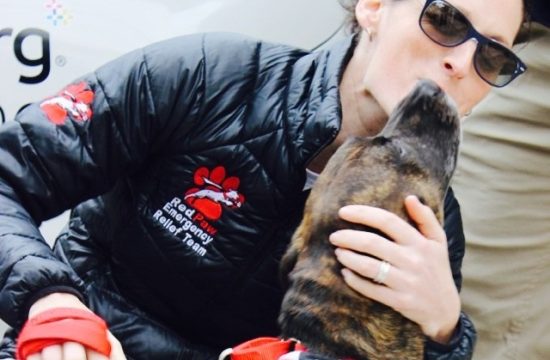April 29, 2016
A big concern for Philadelphia residents when planning for emergencies are their pets, according to feedback given to our office by those taking a minute to take our Hazard Mitigation Plan survey. Statements such as “I don’t want to leave my pet”, and questions like “Can I bring my pet to a shelter?’ or “How do I prepare my pet for an emergency?”.
Here is the answer for those concerned about leaving their pets behind, or those who say they won’t leave them behind: Animals are welcome at all City of Philadelphia evacuation shelters, reception centers, and on SEPTA evacuation transport vehicles.
The city in partnership with Red Paw, Animal Care & Control Team of Philadelphia, Pennsylvania SPCA, and the Philadelphia County Animal Response Team, provide rescue, care, shelter, and essential needs for companion animals during disasters in accordance with the Pets Evacuation and Transportation Standards Act (PETS Act – Amendment 403 of the Robert T. Stafford Emergency Relief and Disaster Assistance Act).
In regards to people incorporating pets into their preparedness plans, be prepared for an emergency with the following tips:
- Make a plan – identify friends and family that are willing to shelter you and/or your animal
- Make a Go Bag with pet supplies and veterinarian information
- Plan for evacuation and shelter – if you must go to an evacuation shelter you should bring:
- Dogs
- Cages or crate
- Bowls for food and water
- Food
- Beds or padding for crates
- Leash
- Toys and chews
- Cats
- Cage or crate
- Bowls for food and water
- Food
- Beds or padding for crates
- Carrier
- Toys
- litterbox
- Birds
- Carrier or cages
- Blanket, heavy towel, cage liner
- Catch net
- Food
- Water container
- Reptiles
- Permanent and secure housing
- Bowl for soaking
- Heating pad
- Spray bottle
- Food
- Small Animals
- Secure carrier or cages
- Bedding materials
- Food bowl
- Food
- Water bottle
- Hide box or tube
- Care for animals at co-located shelters and reception centers is the responsibility of the owners
- Make sure all pets wear collars and tags with up-to-date identification
- Dogs
For more information about pets and emergency preparedness, visit the ASPCA website.

